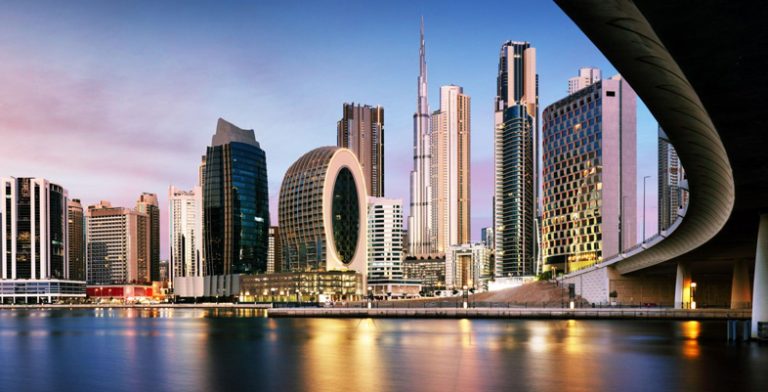The UAE Economic Outlook for 2023 holds significant interest for businesses, policymakers, and investors. It encompasses a comprehensive economic forecast for the UAE, examining the anticipated economic trends in the year ahead. This analysis delves into the economic performance of the UAE, including critical economic indicators that shape the nation’s financial landscape. The UAE’s economic performance is closely scrutinized, taking into account both domestic and international factors that may influence the nation’s economic health.
Analyzing the Financial Models:
Analyzing financial models is a pivotal aspect of understanding the UAE’s economic outlook. It involves conducting in-depth financial modeling analysis to extract valuable insights from data. Data-driven economic analysis is the cornerstone of this process, enabling experts to create economic projections based on the information at hand. The models are designed to guide decision-making, identify trends, and anticipate future developments, especially in the context of economic forecasting within the UAE.
Economic Projections:
Economic projections are the forward-looking estimates that provide a glimpse into the UAE’s economic future in 2023. This includes economic growth projections, GDP forecasts, and expectations regarding economic performance. Precision in these projections is essential, as it informs decisions made by businesses, investors, and government entities. Forecast accuracy is a critical component, and it depends on the accuracy and rigor of the economic development models used in the analysis.
Economic Factors:
Economic factors are the driving forces behind the UAE’s financial landscape. These encompass a wide range of macroeconomic factors and economic variables, including variables like inflation rates, interest rates, and employment figures. Understanding these economic drivers is paramount for anticipating economic trends and challenges. The UAE’s economic landscape is a complex mosaic influenced by both domestic and global factors, which presents a dynamic environment for economic analysis.
UAE Business Environment:
The UAE’s business environment is characterized by an array of factors that play a crucial role in economic performance. Business conditions in the UAE, such as ease of doing business, legal and regulatory structures, and market competitiveness, significantly impact economic opportunities and business growth prospects. The investment climate is closely tied to these conditions, and a favorable regulatory environment often translates into more attractive economic prospects for both local and foreign investors.
In summary, the UAE’s economic outlook in 2023 is underpinned by thorough economic analysis, data-driven projections, and meticulous financial modeling. The accuracy of these models, coupled with a deep understanding of the nation’s economic factors and business environment, will guide decision-making and investment strategies in the UAE throughout the year. Understanding these critical aspects is essential for individuals and entities seeking to navigate the UAE’s ever-evolving economic landscape.
Energy Sector Impact:
The energy sector plays a pivotal role in the UAE’s economic outlook, as the nation is a significant producer and exporter of oil and gas. Changes in global energy demand, oil prices, and the UAE’s energy policies can have a substantial impact on its economic performance.
Infrastructure Development:
Infrastructure development is a key driver of economic growth in the UAE. Major projects in areas like transportation, construction, and technology infrastructure are essential for enhancing the nation’s competitiveness and supporting various industries.
Diversification Efforts:
The UAE has been actively working on diversifying its economy away from oil dependency. Understanding the progress and strategies behind diversification efforts is vital for assessing the nation’s economic resilience and potential for growth in non-oil sectors.
Global Trade Partnerships:
The UAE’s trade relationships with other countries and regions influence its economic outlook. Trade agreements, partnerships, and geopolitical considerations can impact the UAE’s economic opportunities and challenges.
Labor Market Dynamics:
The labor market is a critical component of economic performance. Factors like employment rates, skilled labor availability, and labor market policies have a direct impact on the UAE’s economic health.
Tourism and Hospitality Sector:
The tourism and hospitality sector is a significant contributor to the UAE’s economy. Understanding the trends, regulations, and developments in this sector is crucial for gauging economic prospects, especially in a post-pandemic world.
Sustainable and Green Initiatives:
Sustainability and green initiatives are gaining prominence in the UAE. These initiatives include renewable energy projects, sustainability goals, and efforts to reduce carbon emissions. They can impact economic development and create new opportunities in emerging sectors.
Fiscal and Monetary Policies:
The fiscal and monetary policies implemented by the UAE’s government and central bank are instrumental in shaping the nation’s economic landscape. Changes in tax policies, monetary policies, and government spending can have far-reaching effects on economic prospects.
Consumer Behavior and Retail Trends:
Understanding consumer behavior and retail trends is essential for businesses and investors. It provides insights into evolving consumer preferences and the adaptability of the retail sector in response to changing economic conditions.
Digital Transformation and Technology Adoption:
The UAE’s commitment to digital transformation and technology adoption is reshaping various industries. Investments in technology, innovation, and smart cities can influence economic growth and provide new opportunities for businesses.
Geo-Political Influences:
The UAE’s geopolitical position in the Middle East and its relationships with neighboring countries and global powers have a bearing on its economic stability and security. Geopolitical influences can impact investment confidence and international trade.
Conclusion:
In conclusion, the UAE’s economic outlook for 2023 is a dynamic and multifaceted landscape, influenced by a complex interplay of domestic and global factors. A thorough analysis of economic trends, financial models, and economic projections provides a roadmap for decision-makers in the UAE. It’s clear that the nation’s economic performance hinges on a diverse range of factors, from the energy sector’s impact to infrastructure development, diversification efforts, and global trade partnerships. As the UAE navigates these economic challenges and opportunities, the implementation of sound fiscal and monetary policies, progress in sustainable initiatives, and adaptability to changing consumer behavior and technological transformation will be crucial. Additionally, the nation’s geopolitical standing in the Middle East further underscores the need for a nuanced and strategic approach to economic decision-making.






